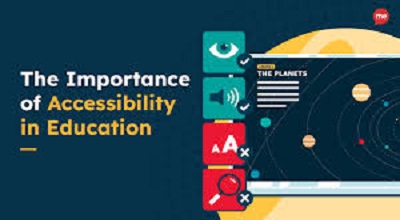Accessibility in Teacher Training
Accessibility in Teacher Training: Accessibility in teacher training ensures that all educators, including those with disabilities, can effectively participate in professional development programs. As education evolves, inclusive practices must be integrated into teacher training to create equitable learning environments. This blog explores the latest trends, examples, and best practices for accessibility in teacher training.
Why Accessibility in Teacher Training Matters?
Teachers play a crucial role in shaping inclusive classrooms. However, if teacher training programs are not accessible, educators with disabilities may face barriers in acquiring essential skills. Accessibility ensures:
- Equal opportunities for all educators
- Compliance with legal standards (e.g., ADA, WCAG)
- Improved teaching strategies for diverse learners
Key Components of Accessible Teacher Training
1. Digital Accessibility in Online Courses
Many teacher training programs are now online. Ensuring digital accessibility includes:
- Screen Reader Compatibility – Training materials should be readable by tools like JAWS or NVDA.
- Closed Captioning & Transcripts – Videos must include captions for hearing-impaired educators.
- Keyboard Navigation – Courses should be navigable without a mouse.
Example: Coursera and edX provide accessible online teacher training with adjustable text sizes and keyboard shortcuts.
2. Inclusive Physical Training Environments
For in-person training, accessibility considerations include:
- Wheelchair-accessible venues
- Sign language interpreters
- Braille handouts
Example: The National Education Association (NEA) hosts conferences with real-time captioning and assistive listening devices.
Universal Design for Learning (UDL) in Training Modules
UDL ensures training materials cater to diverse learning needs by:
- Offering multiple formats (text, audio, video)
- Providing flexible assessment methods
- Encouraging collaborative learning
Example: Harvard’s Graduate School of Education uses UDL principles in its teacher training programs.
4. Assistive Technology Integration
Training programs should introduce assistive tools such as:
- Speech-to-text software (e.g., Dragon NaturallySpeaking)
- Text-to-speech tools (e.g., NaturalReader)
- Adaptive keyboards and switches
Example: The University of Washington’s DO-IT program trains teachers on using assistive tech in classroomsLatest Trends in Accessible Teacher Training
- AI-Powered Accessibility Tools – AI helps generate real-time captions and translations.
- VR for Immersive Training – Virtual reality simulates inclusive classroom scenarios.
- Gamification for Engagement – Accessible game-based learning enhances participation.
Challenges and Solutions
Challenges:
- Lack of awareness among trainers
- High costs of assistive technologies
- Resistance to adopting new methods
Solutions:
- Conducting accessibility workshops
- Partnering with disability advocacy groups
- Using open-source accessibility tools
Conclusion
Accessibility in teacher training is not optional—it’s a necessity. By implementing inclusive practices, training programs can empower all educators to succeed. Institutions must stay updated with the latest technologies and policies to ensure no teacher is left behind.
Free Here: AG4 WhatsApp APK
